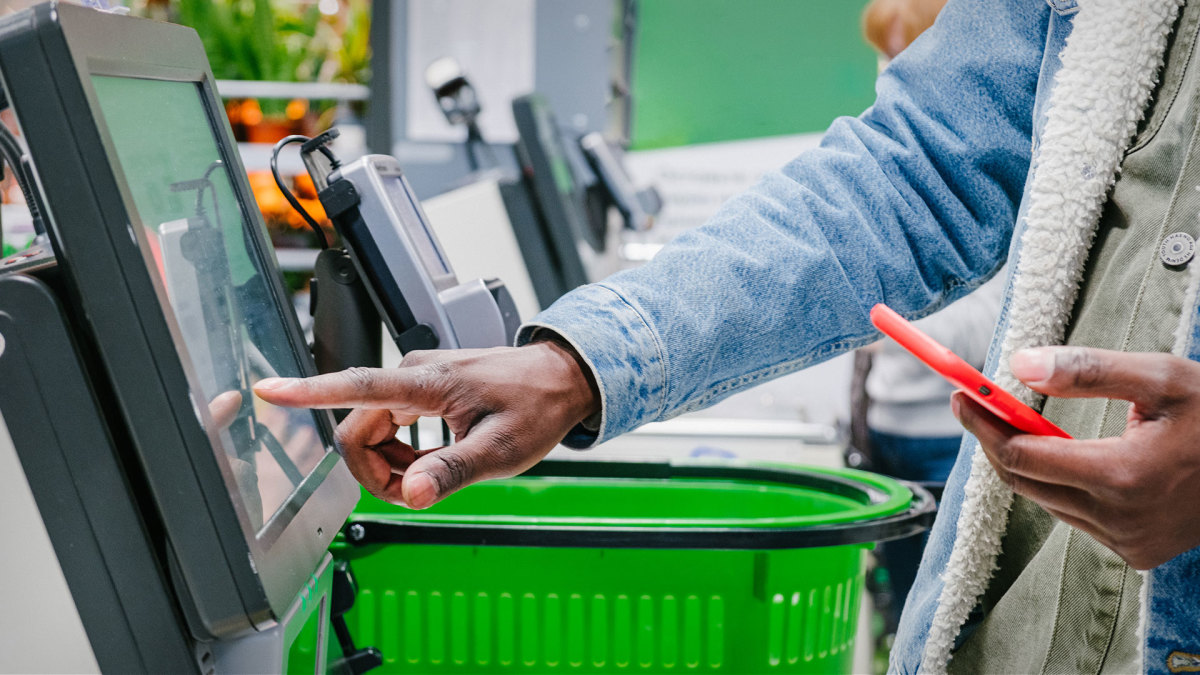Walmart makes a huge pricing change customers might not love
The retailer has made a major move in how it prices items, and Target, supermarket chains, and others might have to follow.

Retailers want to cut labor costs; that was the logic behind the wave of chains adding self-checkout.
If consumers scanned their own items, a staffer did not have to. Instead of one clerk per aisle, a retailer could have one person assisting and overseeing several self-checkout stations.
Related: Home Depot launches Amazon-style feature customers will love
The downside of that effort quickly became obvious: It was an invitation to steal.
Stores found it hard to determine the difference between an accidentally missed item and an intentionally unscanned one. The system inherently encouraged customers to miss an item here or there, and retailers have been wary of challenging customers in these situations.
Retailers never suggested that self-checkout was a cost-cutting measure, always saying that the staffers would be reassigned elsewhere. But in many cases, self-checkout has failed. Target and Walmart (WMT) have rolled back the hours for self-checkout and limited the numbers of items customers can scan by themselves. (The changes vary by store.)
Other retailers, including Dollar General, have decided to largely eliminate self-checkout.
The failure of self-checkout, however, has not eased retailers' interest in reducing labor costs, and that means increasing automation. Chains have struggled with tech as well: Robot cleaners, inventory systems and other attempts to replace people have mostly failed.
Walmart, however, might have found the perfect way to automate a mundane and labor-intensive task in a way that enables it to better control its pricing. Image source: Getty Images
Walmart adds a new pricing system
Walmart has decided to invest in digital shelf labels, putting them in 2,300 stores by 2026. This accomplishes a number of things for the retail giant.
First, it takes the labor-intensive task of pricing items away from human workers. It also enables dynamic pricing in a much easier way.
Most places prohibit stores from raising prices beyond a certain level in times of crisis, so Walmart can't double the price of bread before a snowstorm. But, for example, in an urban market it could raise the price of umbrellas or ponchos just as the rain starts.
The technology gives the chain tight control of prices, which in turn could help it to maximize profit. If Walmart, for example, sees that ready-to-drink beverages sell better at lunchtime or late in the afternoon, it could easily raise prices accordingly.
A small change, really a number of them, across such a large company could produce a significant increase in revenue. Conversely, if Walmart is seeing sales of an item drop, perhaps because Target or another rival offers it for less money, it could cut the price of that item.
The system could both benefit and hurt the chain's shoppers.
Sign up for the Come Cruise With Me newsletter to save money on your next (or your first) cruise.
Walmart is first, but not the last
"Retailers are cutting out mundane work tasks for store workers everywhere they can. The latest endeavor? Digital shelf labels," retail-pricing consultant Revionics told TheStreet. "Already popular in Europe, the trend is about to take the U.S. by storm. (Anytime Walmart rolls out a strategy, industry peers soon follow.)"
Walmart has not said how it's going to use its new ability to dynamically change prices in its stores. That makes sense because companies tend to be protective of their pricing strategies.
Revionics' senior director of strategy and innovation, Matt Pavich, said that other companies following along is inevitable.
"Walmart is the most competed against retailer in the U.S. and its investment in digital shelf labels has raised the stakes significantly for every retailer trying to match/index or beat them on prices and promotions," he said.
"Once this new technology is rolled out, Walmart can move as quickly as it wants on prices and do it cheaper and with higher compliance than their competition."
Want the latest cruise news and deals? Sign up for the Come Cruise With Me newsletter.
The chain's advantage will be significant if its rivals don't make the same investment.
"This new reality means that retailers vying for share will need to price more dynamically to compete," he said. "It is safe to say that retailers that are falling behind on pricing technology and sophistication will be at a significant disadvantage moving forward."
What's Your Reaction?



























































